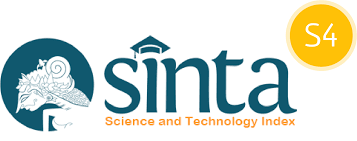Formulation of Salam (Syzygium polyanthum (wight) walp) Leaves Ethanolic Extract Matrix Patch and Its Evaluation
Abstract
The total flavonoid content in salam leaves has an anti-inflammatory activity at a dose of 2.1% w/w. For topical anti-inflammatory, a matrix patch has a delivery mechanism that drugs pass through in the skin in a controlled for an extended period. Polymers were the patch's main component to control the drug release. Polyvinyl alcohol (PVA) and alpha-cellulose (AC) were polymers that can increase the rate of drug diffusion and form a strong film layer. Salam leaves were extracted by maceration using ethanol 96%. Matrix patches were made with a combination of PVA and AC in ratios 1:1; 3:1; 1:3. The patches were tested for physicochemical properties. The stability test was conducted at 4, 25, and 40 temperatures for 8 h, respectively. Statistical analysis of the test data used One Way ANOVA with a confidence level of 95%. The results showed that the high concentration of PVA significantly affected the weight and moisture content but did not affect the organoleptic thickness, folding endurance, and pH of the matrix patch. The best matrix patch of salam leaves ethanolic extract was PVA and AC of 3:1 because it met the requirements for the matrix patch, including the weight of 1.96-2.06 grams, thickness of 1.15-1.18 mm, folding endurance >300 times, humidity 25.75 – 30.17% and pH 6.3 – 7.1. The patch contains flavonoids with Rf values for extract and patch of 0.95 and 0.96, respectively. Further study, in vivo anti-inflammatory test is necessary.
































